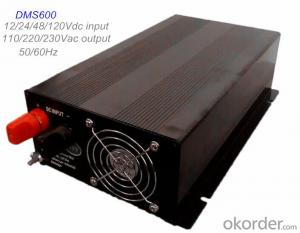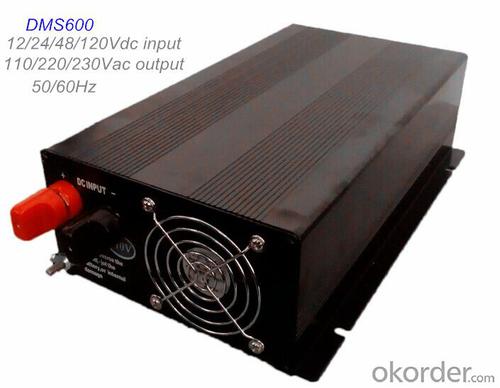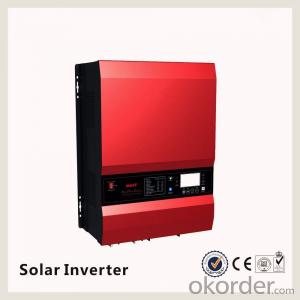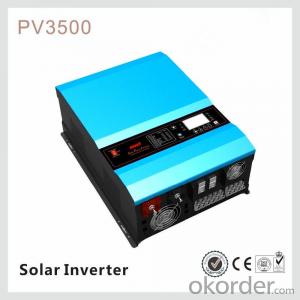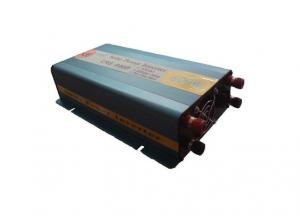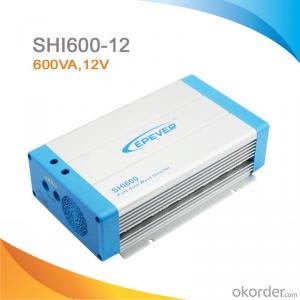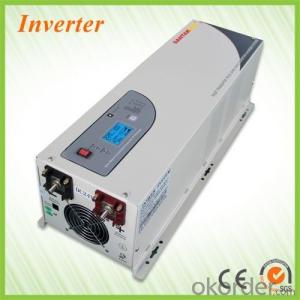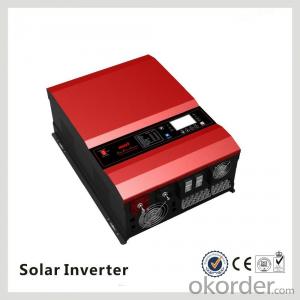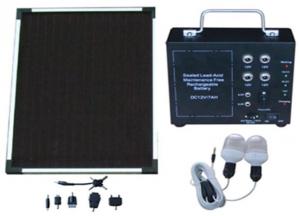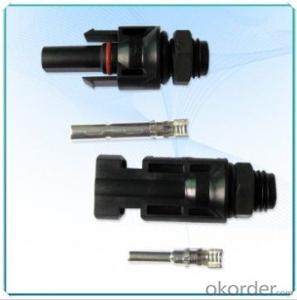Baywa R.E. Solar Energy Systems - DC/AC Solar Power Inverter/ DC AC Inverter 600W High Efficiency 12V/24V/36V/48/120V Input
- Loading Port:
- Qingdao
- Payment Terms:
- TT or LC
- Min Order Qty:
- 1 pc
- Supply Capability:
- 800 pc/month
OKorder Service Pledge
OKorder Financial Service
You Might Also Like
Specifications
1.Pure sine wave output(<2%THD)
2.High Efficiency 87%-90%
3.High motor start driven force
4.Function of battery protection
Product characteristic:
1.Pure sine wave output(<2%thd)
2.Input & Output fully isolation design
3.High Efficiency 87%-90%
4.High motor start driven force
5.5-stage thermal control fan
6.Function of battery protection
Technical Parameters:
Model | DMS600-122 | DMS600-242 | DMS600-362 | DMS600-482 | DMS600-602 | DMS600-1202 |
Continuous output power | 600W | 600W | 600W | 600W | 600W | 600W |
Max power output | 620W | 620W | 620W | 620W | 620W | 620W |
Peak instantaneous power | 1200W | 1200W | 1200W | 1200W | 1200W | 1200W |
Conversion efficiency | ≥87% | |||||
No -load current | 0.8A | 0.4A | 0.26A | 0.2A | 0.16A | 0.09A |
Output AC Voltage | 220/230/240/110/120/130V +5% | |||||
Output wave form | Sine wave < 2%THD | |||||
Frequency output | 50/60Hz+2% | |||||
Input Dc Voltage | 10-16VDC | 20-30VDC | 30-45VDC | 40-60VDC | 60-90VDC | 100-150VDC |
Fault display | Red lamp flickers and buzzer alarms | |||||
Working temperature | -20~55℃ | |||||
Function of protection | Alarm and protection in over loading, over voltage, low voltage, short circuit, over heating and converse connection, etc. | |||||
Fan | Thermal control | |||||
Product measurement | 320*182*81(mm) | |||||
Pack measurement | 370*220*140(mm) | |||||
Net weight | 3.8Kg | |||||
Gross weight | 4.1Kg | |||||
Application:
Electric tools:fretsaws, drills, mullers, grinder wheels, mowers, air compressors, etc.
Office equipment:computer, facsimile machines, scanners, etc.
Kitchen appliances:microwave oven, refrigerators, blenders, soybean juice machine, coffee makers, ovens, etc.
Lighting instruments: high pressure sodium lamp, compact fluorescent light, daylight lamp, halogen light, etc.
Home entertainment electronics:TV, blower, vacuum cleaners, fans, video games, musical instrument, charger, etc.
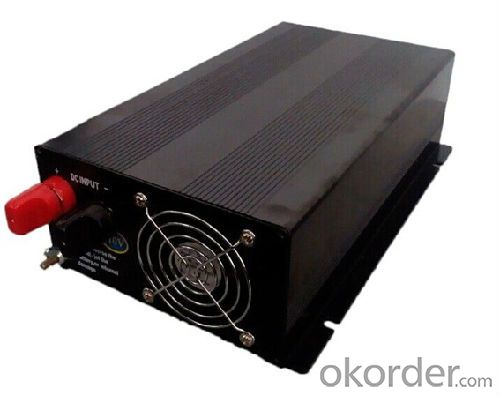
FAQ
Q1:Can we visit your factory?
A1:Sure,welcome at any time,seeing is believing.
Q2:Which payment terms can you accept?
A2:T/T,L/C,Moneygram,Paypal are available for us.
- Q: Can solar energy systems be used in areas with limited access to solar fuses and breakers?
- Yes, solar energy systems can still be used in areas with limited access to solar fuses and breakers. While fuses and breakers are important components for safety and protection in solar systems, alternative solutions can be implemented in areas with limited access. These solutions may include using surge protectors, inverters with built-in protection features, or installing additional circuit breakers and fuses at key points in the system. It is crucial to ensure proper installation and regular maintenance to minimize risks and ensure the safe and efficient operation of solar energy systems in such areas.
- Q: Can solar energy systems be installed on the ground?
- Yes, solar energy systems can be installed on the ground. In fact, ground-mounted solar systems are a popular choice for both residential and commercial applications. These systems typically consist of solar panels mounted on a structure or framework that is anchored to the ground. Ground-mounted systems offer several advantages over rooftop installations, such as increased flexibility in system design, easier access for maintenance and cleaning, and the ability to optimize the orientation and tilt angle of the panels for maximum energy production. Additionally, ground-mounted systems can be installed in areas with limited roof space or where the roof is not suitable for solar panel installation. Overall, ground-mounted solar energy systems provide a practical and efficient way to harness the power of the sun for electricity generation.
- Q: Do solar energy systems require a backup power source during outages?
- No, solar energy systems do not require a backup power source during outages. Solar panels generate electricity from sunlight and can continue to provide power even when the grid is down. However, if the solar system is grid-tied, it may shut down automatically during an outage to prevent sending electricity back to the grid, in which case a backup battery or generator can be used to provide power.
- Q: Can solar energy systems be used for powering aquaculture systems?
- Aquaculture systems can indeed be powered by solar energy. Solar power is a sustainable and renewable source of energy that can be utilized to generate electricity. This electricity can then be employed to operate different components of aquaculture systems, including water pumps, aerators, heaters, and lighting. The utilization of solar energy in aquaculture systems presents several advantages. Firstly, it decreases dependence on finite traditional fossil fuels, which contribute to both environmental pollution and climate change. By adopting solar power, aquaculture systems can significantly decrease their carbon footprint and contribute to a cleaner and more environmentally friendly energy future. Secondly, solar energy is abundantly available in numerous regions worldwide. By harnessing the sun's power, aquaculture systems can function independently of the electricity grid, benefiting remote areas that can now engage in sustainable aquaculture practices. Thirdly, solar energy systems offer long-term cost savings. Although the initial setup and installation costs may be higher compared to conventional energy sources, solar energy systems have significantly lower operational expenses. Once the system is installed, solar power is essentially free, and maintenance costs are minimal. This can result in substantial savings over time, making solar-powered aquaculture systems a financially viable choice. Lastly, solar energy systems can be integrated with other renewable energy technologies, such as battery storage systems. This enables surplus solar energy to be stored and utilized during periods of low sunlight, ensuring a consistent and reliable power supply for aquaculture systems. In conclusion, solar energy systems are an effective means of powering aquaculture systems, offering numerous benefits including environmental sustainability, energy independence, cost savings, and integration with other renewable energy technologies.
- Q: How do solar energy systems affect the roof's lifespan?
- Solar energy systems can actually extend the lifespan of a roof. The panels provide an additional layer of protection to the roof, shielding it from harmful elements like UV rays and extreme weather conditions. Additionally, the panels help to regulate the temperature of the roof, reducing thermal stress and preventing premature aging.
- Q: How do solar energy systems impact the electricity generation mix?
- Solar energy systems have a significant impact on the electricity generation mix by diversifying it and reducing reliance on fossil fuels. The integration of solar power into the mix increases the share of renewable energy sources, which helps reduce greenhouse gas emissions and combat climate change. Additionally, solar energy systems contribute to decentralization and grid resilience, as they can be installed at various scales, promoting a more sustainable and efficient electricity generation landscape.
- Q: Can solar energy systems be used in powering car charging stations?
- Car charging stations can definitely be powered by solar energy systems. Actually, many car charging stations worldwide already rely on solar energy. Solar panels can be placed on the roof or in close proximity to the charging station, capturing sunlight and converting it into electricity. This renewable energy can then be used to charge electric vehicles (EVs) without depending on the traditional power grid. Solar-powered car charging stations have several advantages. Firstly, they provide a sustainable and clean energy source, reducing carbon emissions and the overall environmental impact of EVs. Secondly, they can be installed in remote or off-grid areas where connecting to the electrical grid may be difficult or costly. This makes solar-powered charging stations especially beneficial for rural regions or highways lacking easy access to electricity. Additionally, solar energy systems can incorporate battery storage, enabling excess energy generated during the day to be stored and utilized during the night or periods of high demand. This guarantees a continuous and reliable power source for car charging stations, even in the absence of sunlight. Although the initial installation cost of solar energy systems may be higher when compared to traditional power sources, their long-term operating and maintenance costs are generally lower. Moreover, there are various government incentives and rebates available to promote the use of renewable energy, which can help offset these initial expenses. All in all, solar energy systems offer a viable and sustainable solution for powering car charging stations, providing environmental benefits, energy independence, and long-term cost savings.
- Q: How do solar energy systems impact wildlife habitats?
- Solar energy systems have a minimal impact on wildlife habitats compared to other energy sources. While the installation process may temporarily disrupt habitats, once operational, solar panels do not emit pollutants or generate noise, reducing disturbance to wildlife. Careful planning and proper site selection can further mitigate any potential negative effects, allowing solar energy systems to coexist harmoniously with wildlife habitats.
- Q: How does the size of a solar energy system affect its performance?
- The size of a solar energy system directly affects its performance as it determines the amount of electricity it can generate. A larger system with more solar panels can produce a greater amount of energy, resulting in higher performance and increased ability to meet electricity needs. Conversely, a smaller system may not generate enough energy to fully power a home or business, leading to lower performance and potential reliance on other sources of electricity.
- Q: Can a solar energy system be used during a power outage?
- During a power outage, a solar energy system can indeed be utilized. The ability of solar power to supply electricity even in the absence of a functioning grid is one of its key advantages. This feat is accomplished through the utilization of battery storage systems or backup generators. When the sun is out, solar panels not only produce electricity but also charge the batteries simultaneously. Consequently, these batteries can then furnish power to vital appliances and devices during a power outage. Nevertheless, it is crucial to bear in mind that the duration and quantity of power accessible during such an outage will be contingent on the solar system's capacity and the size of the battery storage. Moreover, a proper system design and installation are imperative to ensure the safe and efficient operation of the solar energy system during an outage.
Send your message to us
Baywa R.E. Solar Energy Systems - DC/AC Solar Power Inverter/ DC AC Inverter 600W High Efficiency 12V/24V/36V/48/120V Input
- Loading Port:
- Qingdao
- Payment Terms:
- TT or LC
- Min Order Qty:
- 1 pc
- Supply Capability:
- 800 pc/month
OKorder Service Pledge
OKorder Financial Service
Similar products
Hot products
Hot Searches
Related keywords
